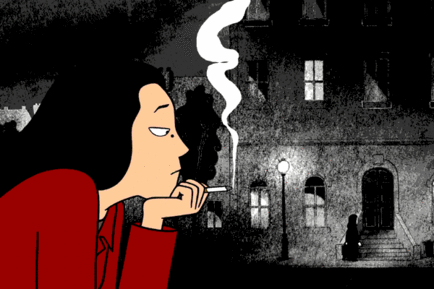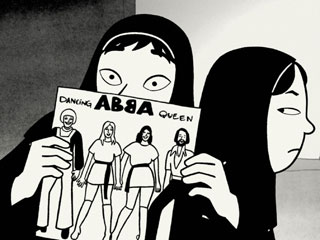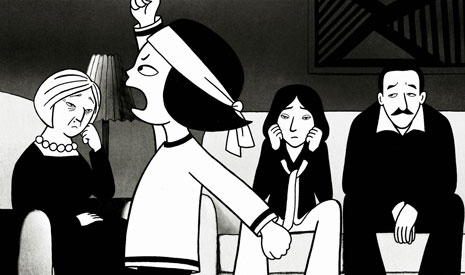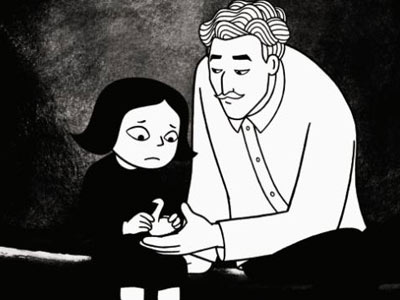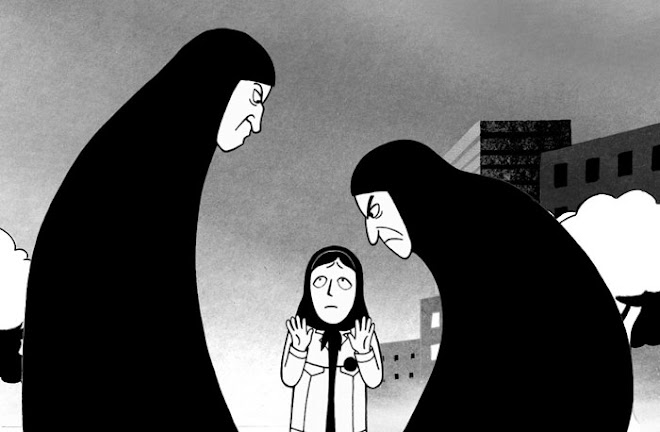This can also be related to another movie I watched about the life of a boy in pre-war Germany in WWII called "The Boy in the Striped Pajamas."

The young, main character, Bruno, lives with his older sister, mother and army commander father in the country where the father comands a prison camp. Bruno eventually befriends a young Jewish boy named Shmuel who lives behind an electric fence. Being young and uneducated about his surroundings, he eventually comes to realize on his own that Shmuel is a Jew, and that the yard behind the fence is actually a camp. It was a brilliantly excecuted movie that was both distressing and moving. I recommend it to everybody. This is quite similar to Persepolis in the sense that young Bruno is living in a society where war is present. However, unlike Marjane Satrapi and her family, his parents keep him in the dark. I also believe that Marjane is mature for her age and not only sympathizes with people involved in the war in Iran, but is also empathetic (in her own way) with all of them. On page 16, Marji dresses up as revolutionary leaders and this is considered her games as a child. Bruno, on the other hand throws a ball to Shmuel over the fence. Shmuel looks solemn and Bruno asks harshly, "Do you not like playing?" Another difference is that Marjane on page 12 is shown reading "Dialectic Materalism" while Bruno is reprimanded reading "adventure books" instead of German war books. This is what makes Persepolis such an unique story, because Marjane is acting so differently than how we understand that children act. But, we must remember that this is an autobiography written by Marjane Satrapi herself, and we do not know if it is all true.
